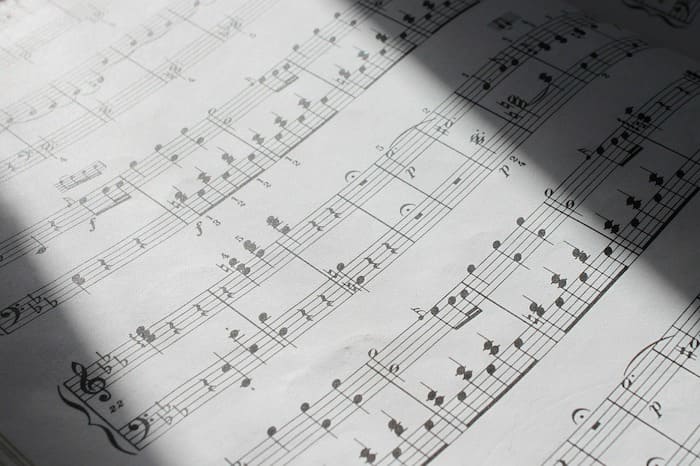
Want to learn to play Turkish March on the piano? You have come to the right place!
Turkish March (Rondo Alla Turca from its original title) is a piano sonata composed in the 1780s by the famous composer Wolfgang Amadeus Mozart.
Although the exact date of composition is unknown to us today, it is very likely that the musician premiered the piece in Vienna in 1783.
The sonata is composed of three main movements: Andante grazioso (theme), Menuetto and Trio, Rondo Alla Turca. It is this last movement that is the most famous today.
Turkish March is a very famous piece but it is still quite difficult to play on the piano. Beginners will have a hard time learning it, because the song has a very fast tempo and is very technical.
However, there are simplified versions that are easy to play and give a first impression of the piano piece.
In this article, we will look at how to play the piano notes of Turkish March. First we will look at the right hand notes, then the left hand notes. Tutorial videos accompany the explanations to give you an audiovisual support and help you to better identify the notes.
You will also find the free piano score of Turkish March to download in PDF.
At the end of this article, the objective is that you know how to play this simplified version of Turkish March perfectly on the piano. Let’s start!
Bonus: you can also learn to play this song at your own pace on our piano learning application La Touche Musicale.
Bonus : you can also learn to play this song at your own pace on our interactive piano learning app La Touche Musicale.
Free download: >> >> The guide to learn 10 easy piano pieces.
Learn to play your favorite songs on the piano
The La Touche Musicale learning app offers more than 2,500 songs to play easily on the piano. Connect your piano to your device and learn to play them at your own pace while having fun.
Before playing Turkish March on the piano, we will first review the piano basics.
Let’s start by looking at the image below, which shows the musical notes on each of the keys of a piano keyboard:

The name of the notes on a piano keyboard.
Looking at the image above, we can see that a piano keyboard is broken down into several parts, all of which are repeated identically.
Each part consists of 7 white keys, and each key is associated with a note (A, B, C, D, E, F and G). When we reach the eighth key, the sequence of notes is repeated identically and a new octave begins.
To easily identify a note on the keyboard, you can use the black keys that line the piano. The black keys work in groups of two and three, which allows us to locate ourselves on the keyboard.
For example, if you are looking for the note F, first identify a group of three black keys. The F is the white key that is located just to the left of the first black key in the group.
Before you start playing Turkish March on the piano, practice quickly identifying the notes on a keyboard using this method. This way, you will learn the notes of this famous classical music much faster.
Before learning to play all the notes with the right hand, we will first use what we have learned before to identify the first note to play.
When you play Turkish March with your right hand on the piano, the first note to be played is the B :
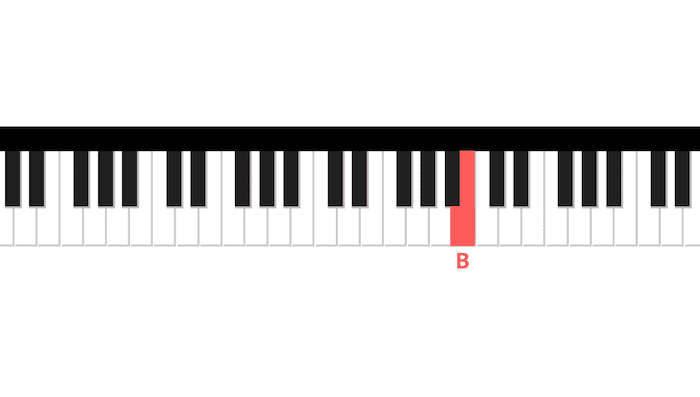
B is the first note of the right hand in the song Turkish March on piano.
Once you have found the B, you will have to play the rest of the song.
Press each of the following keys one after the other with your right hand to play the piano melody of Turkish March:
B – A – G# – A – C – D – C – B – C – E – F – E – D# – E – B – A – G# – A – B – A – G# – A – C – A – C – B – A – G – A – B – A – G – A – B – A – G – F# – E – B – A – G# – A – C – D – C – B – C – E – F – E – D# – E – B – A – G# – A – B – A – G# – A – C – A – C – B – A – G – A – B – A – G – A – B – A – G – F# – E – B – A – G# – A – E – F – G – G – A – G – F – E – D – E – F – G – G – A – G – F – E – D – C – D – E – E – F – E – D – C – C – D – E – E – F – E – D – C – B – A – G# – A – C – D – C – B – C – E – F – E – D# – E – B – A – G# – A – B – A – G# – A – C – A – B – C – B – A – G# – A – E – F – D – C – B – A.
Play all of the above notes in sequence to reproduce the entire right hand of Turkish March on the piano.
Practice this sequence of notes over and over so that you know it by heart. Once you feel comfortable with it, you can start learning the left hand.
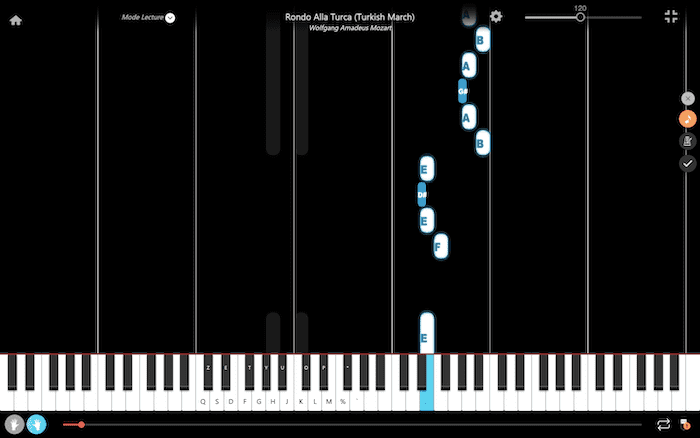
Turkish March on the piano: the notes of the right hand.
Watch this tutorial video to know the time of each note of the right hand and the general tempo of the song [Note: you must remain pressed on the key while the note is on it on the virtual piano]:
La Touche Musicale app waits for you to play the right note with your right hand on your piano before moving on to the next one.
We will do the same as the right hand and start by identifying the first note to play with the left hand to get started.
Place your fingers on the notes A and C of your piano keyboard:
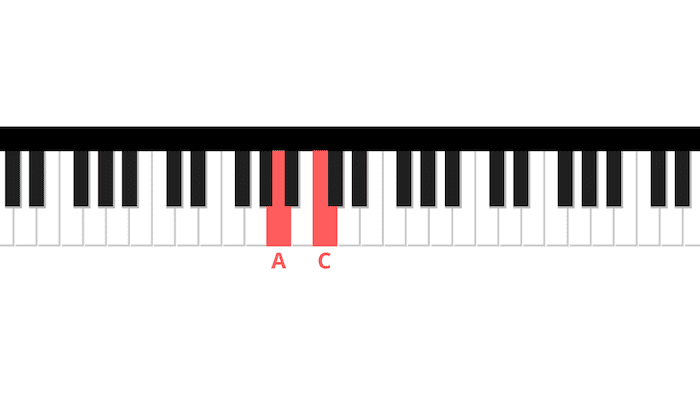
A and C are the first notes of the left hand in the song Turkish March.
Did you find the notes A and C on your keyboard? Excellent! Now you have to play all the following notes with your left hand [Note: when two notes must be played at the same time with the left hand, we have linked them with the “+” symbol]:
A+C – A+C – A+C – E+B – E+B E+B – E – A+C – A+C – A+C – A+C – E+B – E+B E+B – E – C – B – C – B – A – B – A – B – A+C – A+C – A+C – A+C – A – G# – A.
When you play this succession of notes with your left hand, it corresponds to the entire accompaniment of Turkish March on the piano.
The accompaniment is usually played with the left hand and is intended to accompany the melody, which is usually performed with the right hand.
Practice this sequence of notes over and over until you feel completely comfortable playing it.
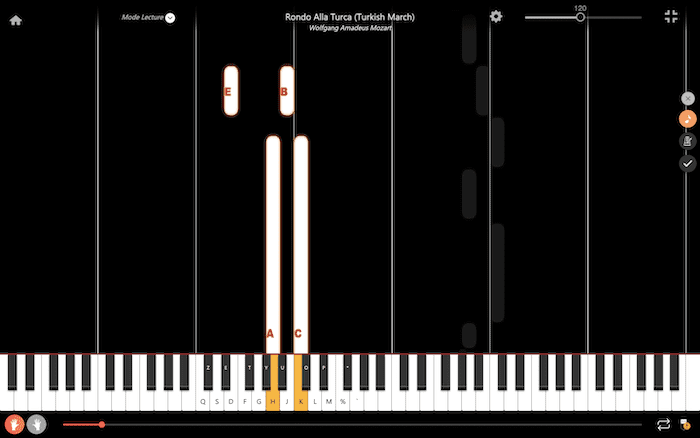
Turkish March on the piano: the notes of the left hand.
As for the right hand, here we will watch a video showing the notes to be played with the left hand only.
Take the time to look carefully at the time of each note (i.e. the length of time you must remain pressed on the note in question) as well as the tempo to respect with your left hand:
The La Touche Musicale app waits for you to play the correct note with your left hand on your piano before moving on to the next.
You can now play Turkish March with both hands, congratulations!
But the hardest part is ahead of us… Now we have to play with both hands at the same time.
Do you know the dissociation of the hands? It is an exercise that allows you to coordinate your two hands on the piano.
It is one of the most difficult exercises when you start playing the piano.
Our brains are not used to making such precise movements as placing the fingers on the keyboard simultaneously.
This is why it takes time for beginners to acquire this skill.
But don’t worry, we’re going to look at some techniques and tips that will allow you to disassociate your hands more quickly.
To learn how to disassociate your hands, there are a few methods and tricks.
You can start by playing the notes of the song you are working on by separating your hands. Start with the right hand notes first, then the left.
This will allow you to gradually learn the sequences and rhythm for each hand.
This is what we have chosen to do in this tutorial dedicated to learning Turkish March on the piano.
Once you feel comfortable with each hand, you have to play both at the same time.
Start by choosing a short passage from the song you are working on. For example, if the song is 5 minutes long, choose to focus on the first 5 or 10 seconds. Play with both hands at the same time. Start slowly and gradually increase the pace until you reach the original tempo of the song.
Once you have mastered this first passage, move on to the next 5 or 10 seconds of the song and repeat the same exercise. Once you have mastered this second passage, play the two passages in a row (the first 10 or 20 seconds of the song).
This technique allows your brain to assimilate the information in a progressive way to better process it. With this method, you will learn much faster.
Note: At La Touche Musicale, we name this technique the “learning loop”. Noticing its effectiveness on piano learning, we decided to integrate a feature into our online piano learning app that allows you to loop any part of the song and learn it in a few hours.
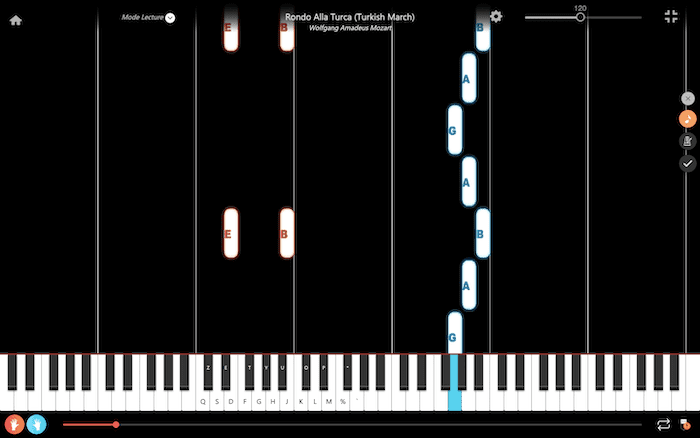
Turkish March on the piano: the notes of both hands.
This third video tutorial shows you the notes to play with both hands at the same time to interpret Turkish March on the piano.
You have already mastered the time of the notes and the tempo of each hand. Focus here on the coordination and synchronization of the two hands together.
If the pace of the video is too fast for you, you can pause it to give yourself time to place your fingers correctly on the piano keyboard.
Note: on La Touche Musicale app, you don’t need to pause the song. The application waits for you until you play the right note.
Ajoutez votre titre ici
The La Touche Musicale app waits for you to play the right notes with both hands on your piano before moving on to the next.
Congratulations! You can now play one of the most famous piano pieces in classical music.
If you liked this tutorial, you will certainly enjoy our similar articles that teach you other piano songs:
– Moonlight Sonata Piano Tutorial
– How to Play the Notes of Clair de lune on the Piano?
– Rhapsody in Blue piano notes
– Play Silent Night on the piano
– Ode to Joy Easy Piano Tutorial
– In the Hall of the Mountain King Piano Notes
– How to Play Canon in D on the Piano?
– Learn the notes of Bohemian Rhapsody on the piano
– Learn to play Deck the Halls Piano Notes
– Learn the notes of Song of Storms on the piano
– Play Twinkle Twinkle Little Star on the piano
– The Office Theme Song Piano Tutorial
– Learn the song Amazing Grace on the piano
You can find the score of Turkish March easily on the internet.
Be careful though, because the version you have learned here is a simplified version. Many sites will offer you the original version, which is much more difficult to play.
In addition to this piano tutorial, we thought it would be interesting to offer you to download the free sheet music of Turkish March in PDF format. This way you can print it out and play this famous classical music song anywhere and anytime.
Share the article on:
La Touche Musicale offers powerful AI apps to help you learn, play, and transcribe music effortlessly. Discover them below.
Ideal for: solo piano

Transcribe your piano pieces to sheet music with unrivalled precision.
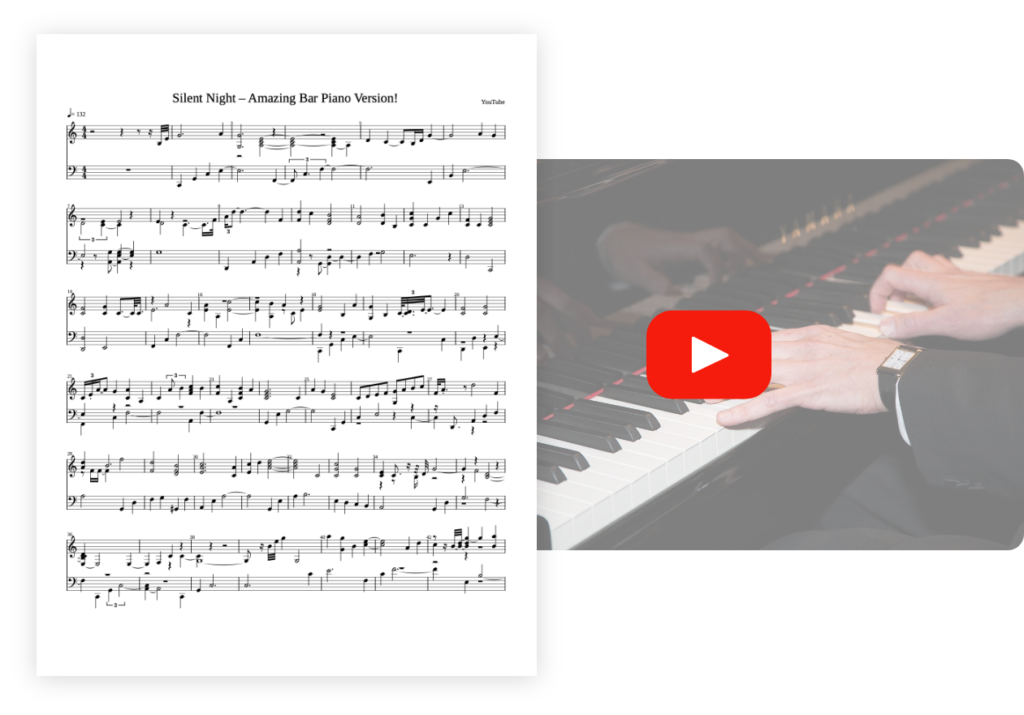
Ideal for: solo guitar

Transcribe your guitar tunes into tablature with unrivalled precision.
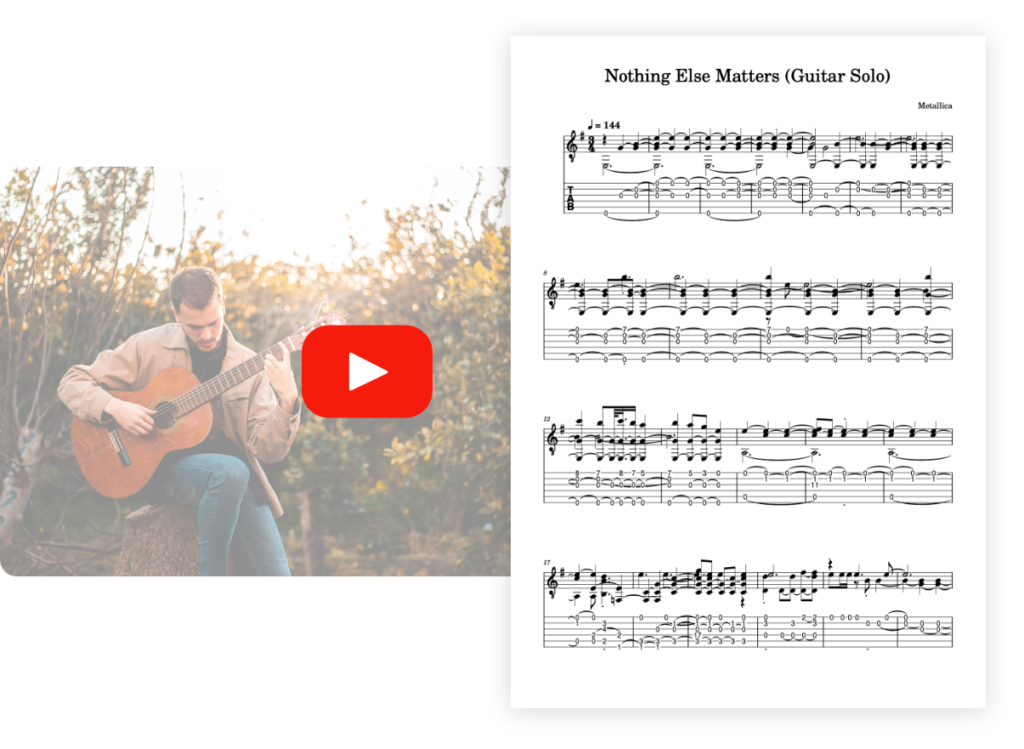
Ideal for: solo vocals

Transcribe your vocal recordings into sheet music with unrivalled precision.
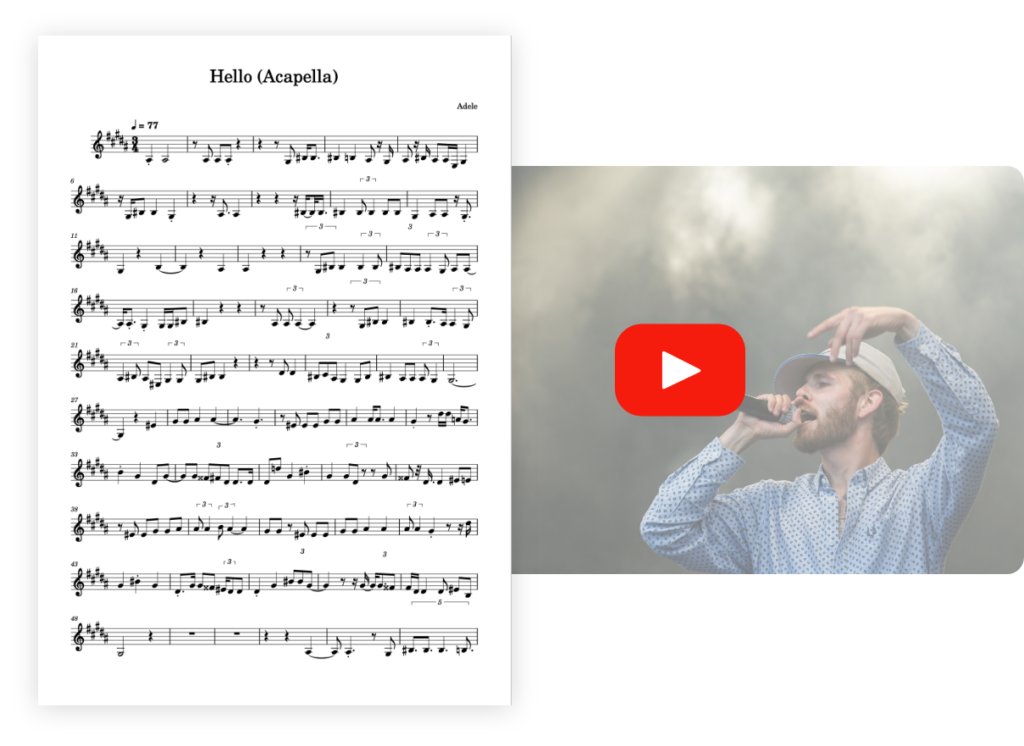
Ideal for: multi-instruments

Transcribe your multi-instrument tracks into sheet music with unrivalled precision.
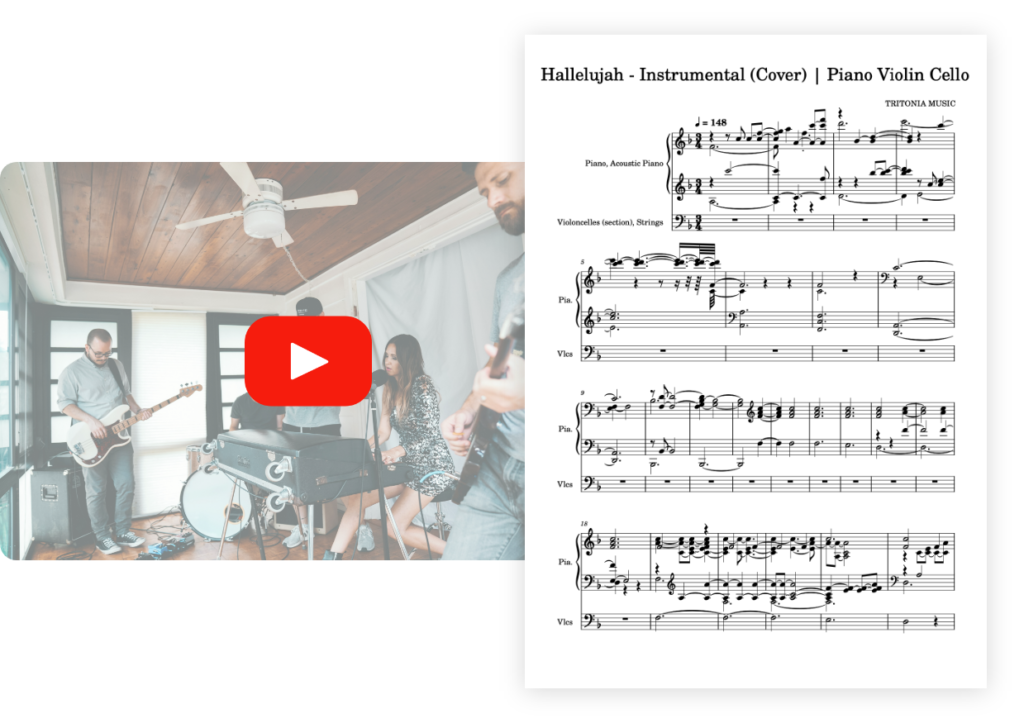
Ideal for: solo drums

Transcribe your drum tracks into sheet music with unrivalled precision.

Ideal for: solo violin

Transcribe your violin pieces into sheet music with unrivalled precision.
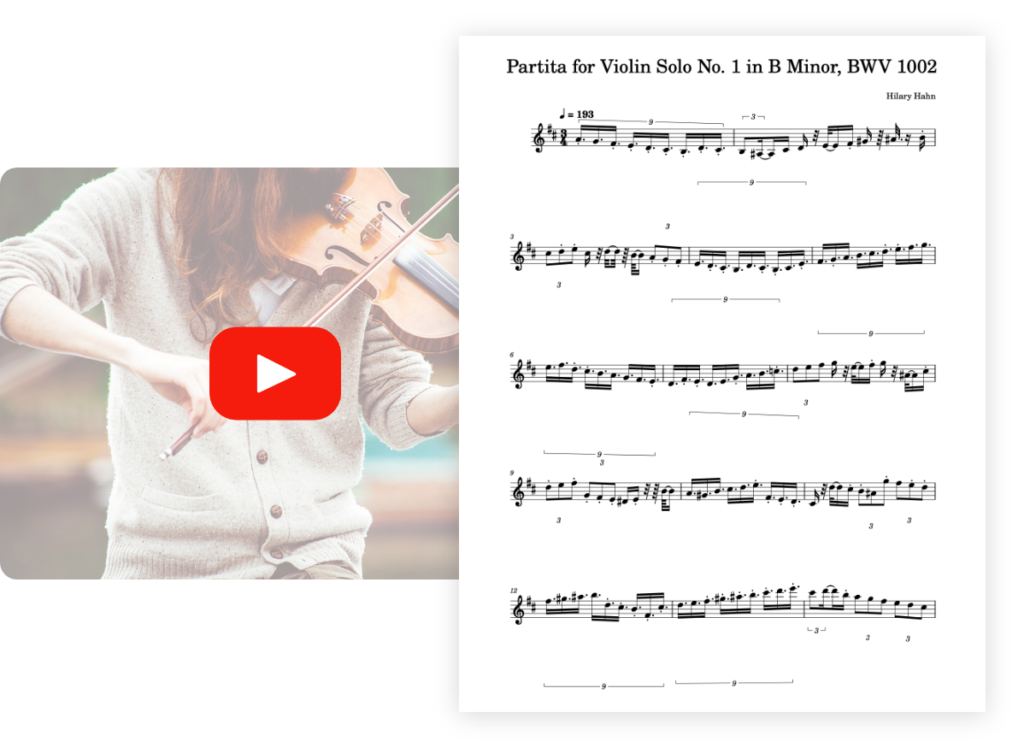
Optimized for: solo saxophone 🎷

Transcribe your saxophone pieces into sheet music with unrivaled precision.

Optimized for : solo flute 🪈

Transcribe your flute pieces into sheet music with unrivaled precision.
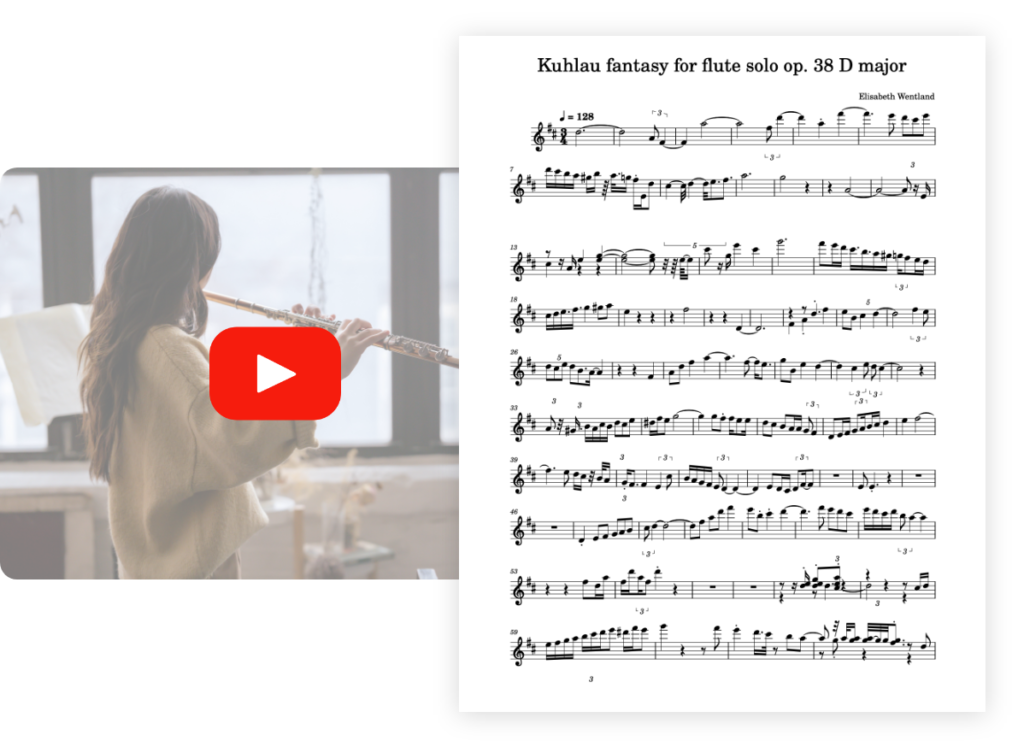
Optimized for : solo bass 🪕

Transcribe your bass pieces into sheet music with unrivaled precision.
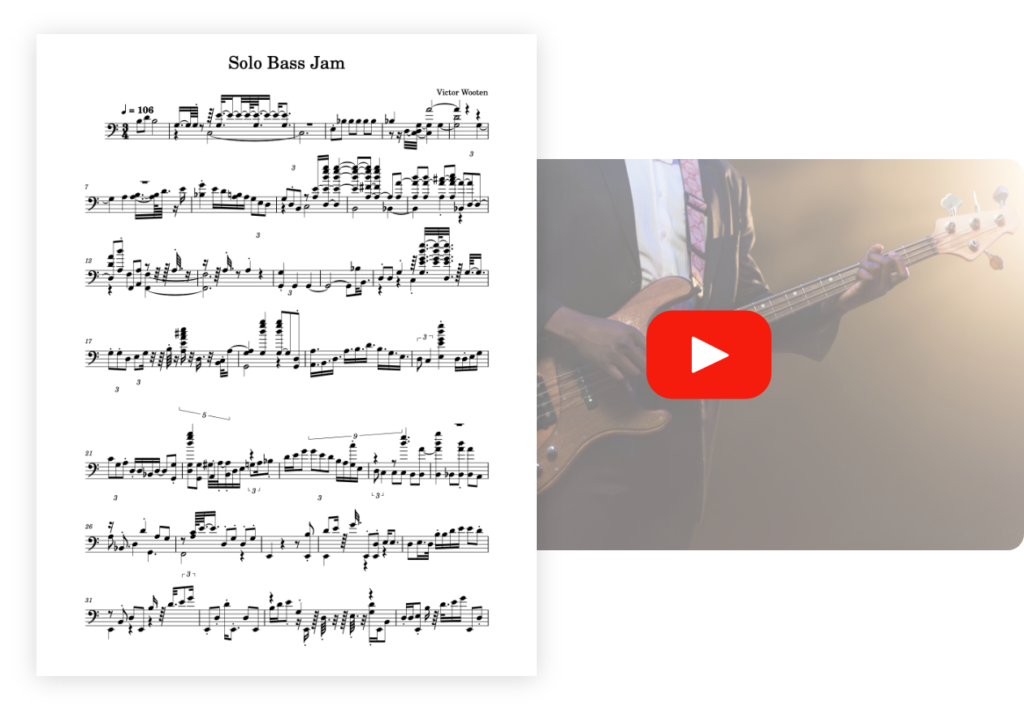
PianoGo lets you learn to play over 3,000 songs easily on the piano.
